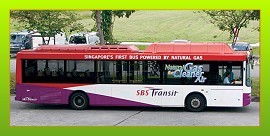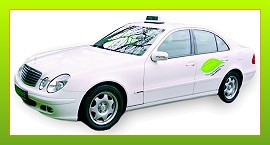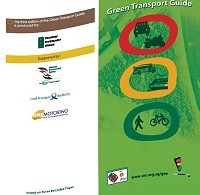 |
|
Reports according to Master’s order and rating
Singapore
Singapore’s “Green” Efforts |
By Singapore News Group (Originally in English)
Global warming may be the biggest environmental problem facing the world today. Since the industrial revolution, we have been burning fossil fuels to power our homes, industries and vehicles. This generates greenhouse gases, mainly carbon dioxide, resulting in significant global temperature increases.
Singapore, a small island nation with a large population relative to its size, has not been spared from the threat of global warming. The 10 warmest years on record for Singapore have occurred since 1990, including every year since 1997.
These climatic changes are related to the rapid industrialization and economic development that Singapore has experienced in the past decade. Standards of living have increased tremendously, but unfortunately, so has pollution.
Aware that without control measures,
emission levels will continue to rise, the government of Singapore
is doing its part to decrease pollution. In the words of Mr. Lim Swee
Say, Singapore’s former Minister for the Environment, “sustainable
development is our common challenge. We must not allow economic growth
and social progress in the short term lead us to environmental disasters
in the long term.”
 |
Singapore’s first CNG bus |
 |
CNG-powered SMART taxi. SMART is one of the first companies in Singapore to utilize CNG-powered vehicles. |
Singapore’s authorities intend to improve air quality by enforcing stringent emissions standards, promoting energy conservation, and investing in cleaner sources of energy. In April 2006, Singapore ratified the Kyoto protocol, aimed at reducing greenhouse gases. Clean mechanism development, a provision of the Kyoto protocol, encourages businesses to become more energy efficient by implementing carbon trading schemes and green technologies. In accordance with Kyoto, the Singapore Green Plan 2012 has been revised to “improve carbon intensity (i.e. carbon dioxide emission per GDP dollar) by 25% from the 1990 level by 2012…”
Among other things, this means promoting the replacement of traditional cars with low-emission vehicles. The Land Transport Authority encourages people to drive “green” cars. These vehicles, including electric hybrid vehicles and cars powered by compressed natural gas (CNG), emit less pollution than traditional cars. Hybrid vehicles combine traditional engines with other sources of power, such as electricity or pressure. Hybrid vehicles use an electric motor to start and when traveling at low speeds. A fuel-burning engine works in conjunction with the electric motor for acceleration and traveling at high speeds.
 |
Singapore’s Green Transport Guide |
To encourage people to buy hybrid and CNG cars, the government is offering tax rebates to offset costly registration fees and taxes. Similar monetary incentives make it easy for drivers to switch their vehicles from Euro II to the more stringent Euro IV emission standards. To increase awareness of these issues, a handbook called “Green Transport Guide” has been made available to the public.
In conclusion, Singapore’s
government sees environmental stewardship as an integral part of responsible
leadership. From this enlightened point of view, economic development
and environmental conservation become mutually supportive goals. ![]()
|
References:
|
| << | Contents | >> |
|
Refer this page to friends
|
||
